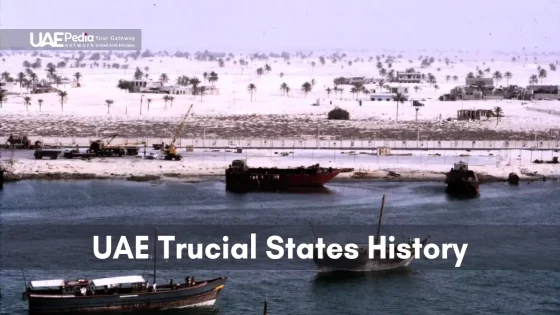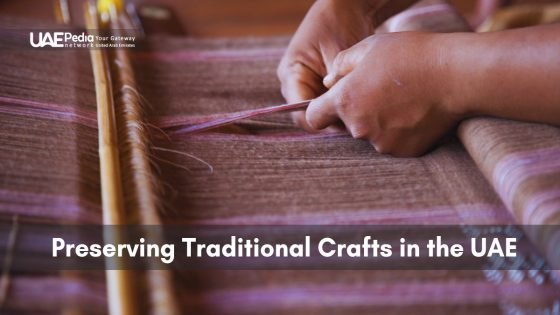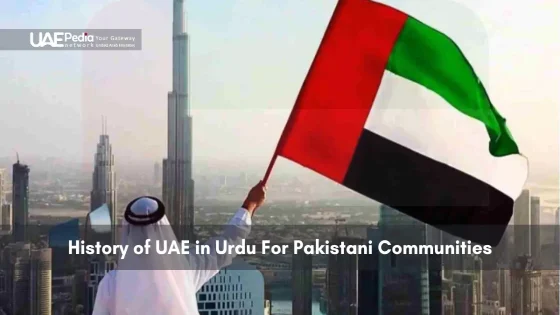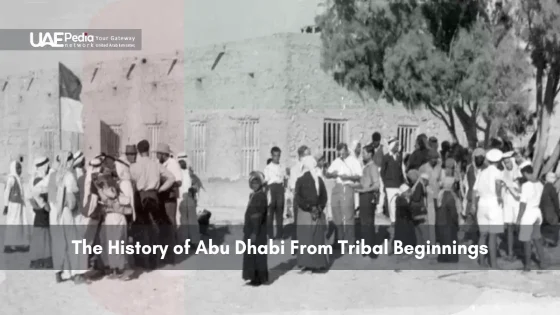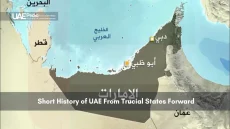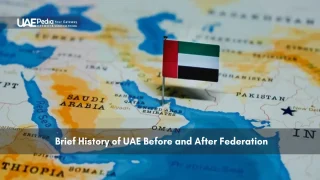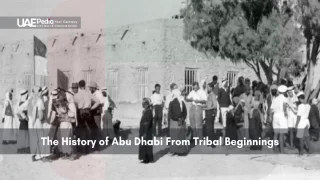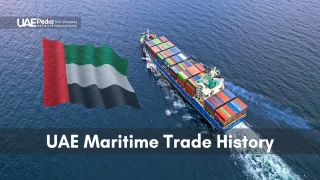Ever wondered how small sheikhdoms along the Arabian Peninsula’s coast became the United Arab Emirates? The story of the Trucial States is a journey through time. It’s filled with maritime adventures, British influence, and the birth of a nation. Let’s explore the rich history that shaped this unique corner of the Persian Gulf.
The UAE Trucial States history is a tale of transformation. It started as the “Pirate Coast” and became the Trucial States. British protection treaties were key in shaping its destiny. The Persian Gulf became active, with tribal confederations along the southeastern Arabian Peninsula.
Did you know the UAE’s roots go back to 6000 B.C.? Nomadic tribes roamed these lands, fishing, hunting, and herding. By 1971, a federation was born, changing the Middle East forever. What forces drove this remarkable evolution?
UAE Trucial States History: Origins and Formation
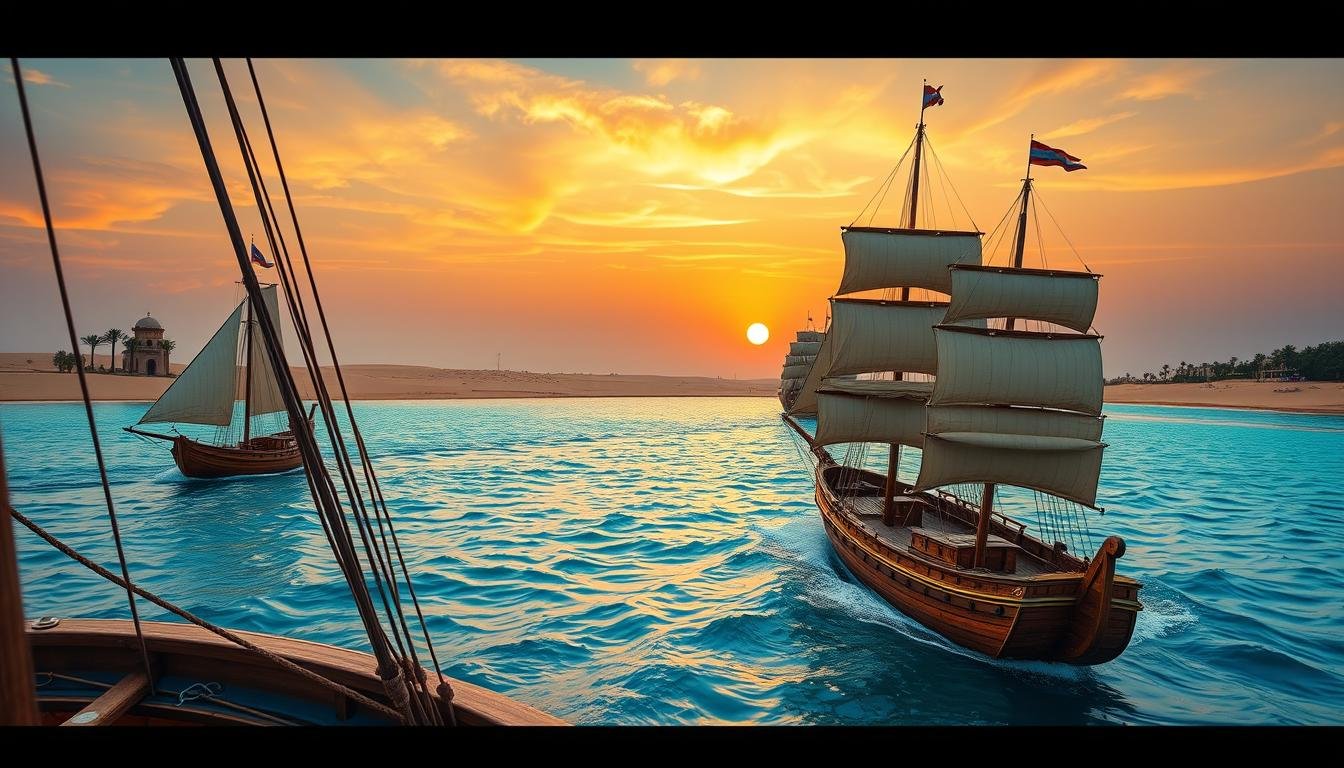
The Trucial States’ story starts in the 18th century. Back then, fishing and pearling were big in the UAE’s desert. The Pirate Coast got its name from raids on ships in the Persian Gulf.
The Emergence of the Pirate Coast
The Al Qasimi tribe was known for attacking British ships. These attacks caused big problems for trade and made the area tense.
British Maritime Interests in the Region
The British wanted to protect their trade with India. So, they sent naval forces in 1809 and 1819. They wanted to stop piracy and keep trade routes safe.
The General Maritime Treaty of 1820
The 1819 British attack on Qasimi forces led to the General Maritime Treaty of 1820. This treaty brought peace and started British influence in the area.
| Year | Event | Significance |
|---|---|---|
| 1819 | British naval attack | Weakened Qasimi forces |
| 1820 | General Maritime Treaty | Established peace and British influence |
| 1853 | Perpetual Maritime Truce | Formalized the Trucial States |
The treaty was signed by rulers from Sharjah, Ras Al Khaimah, and Abu Dhabi. It was the start of the Trucial States, which became the United Arab Emirates.
The Evolution of British Protection Treaties
British protection of the Trucial Sheikhdoms grew stronger through a series of treaties. These agreements aimed to secure maritime peace and establish exclusivity in the region. The British sought to protect their interests while offering defense to the local sheikhs.
The Perpetual Maritime Truce of 1853
The Perpetual Maritime Truce of 1853 was a big step. It was signed on May 4, 1853. Sheikh Sultan was the “Chief of the Joasmees” at the time.
This agreement aimed to end maritime attacks. It brought stability to the pearling industry and trade in the region.
The Exclusive Agreement of 1892
The Exclusive Agreement of 1892 further solidified British influence. Under this treaty, the sheikhs agreed not to dispose of territory except to Britain. They also promised not to enter foreign relations without British consent.
This agreement applied to the rulers of Abu Dhabi, Dubai, Sharjah, Ajman, Ras Al Khaimah, and Umm Al Quwain.
British Defense Obligations and Rights
In return for these exclusivity agreements, Britain promised to protect the Trucial Coast. They vowed to defend against sea aggression and assist in case of land attacks. This protection came with increased British rights in the region.
The agreements laid the foundation for the long-standing relationship between Britain and the Trucial States. This relationship lasted until the formation of the UAE in 1971.
| Year | Agreement | Key Points |
|---|---|---|
| 1820 | General Peace Treaty | Ended piracy, introduced red flag symbol |
| 1853 | Perpetual Maritime Truce | Long-term peace, stability for pearling and trade |
| 1892 | Exclusive Agreement | British exclusivity in foreign relations and territory |
Political Structure and Governance of the Trucial States
The Trucial States had a special way of ruling. It mixed old tribal ways with British help. From 1820 to 1971, seven sheikhdoms were protected by Britain. Each was led by a sheikh from a famous family.
The Seven Sheikhdoms
The Trucial States were made up of Abu Dhabi, Ajman, Dubai, Fujairah, Ras Al Khaimah, Sharjah, and Umm Al Quwain. These places became the UAE. Six joined on December 2, 1971. Ras Al Khaimah joined on February 10, 1972.
Traditional Tribal Leadership
Tribal groups were key in politics. The Al Nahyan family of Abu Dhabi became very powerful by the mid-1800s. Each sheikhdom kept its own identity but worked under British protection.
The Formation of the Trucial States Council
In 1952, the Trucial States Council was set up. It helped the seven rulers work together. This council was a big step towards unity. It helped set the stage for the UAE.
| Year | Event |
|---|---|
| 1820 | General Maritime Treaty signed |
| 1952 | Trucial States Council established |
| 1971 | United Arab Emirates formed |
Economic Development and Trade Relations
The Trucial States’ economy changed a lot over time. It moved from old industries to new ones. This shows how the region can adapt and be resourceful.
Pearl Diving Industry
Pearl diving was key to the Trucial States’ economy for a long time. Divers risked their lives to get pearls from the Persian Gulf. This trade drew merchants from everywhere, making it very important.
Maritime Commerce
The Trucial States’ location helped a lot with maritime trade. Its ports were busy with merchants from India, Persia, and Arabia. This trade was vital for the region’s growth.
Currency Evolution
The Trucial States’ money changed over time. It used the Indian Rupee and then the Gulf Rupee. This change showed the area’s growing independence and its changing economy.
| Period | Currency |
|---|---|
| 1820-1899 | Ottoman Lira |
| 1899-1959 | Indian Rupee |
| 1959-1966 | Gulf Rupee |
| 1966-1971 | Bahraini Dinar |
Oil was found in the mid-20th century. This changed the Trucial States’ economy a lot. It led to fast modernization and new economic activities.
The Path to Federation and Independence
In 1968, a big change came for the Trucial States. Britain said it would leave the Persian Gulf by 1971. Sheikh Zayed bin Sultan Al Nahyan of Abu Dhabi started talks for a federation.
The road to the United Arab Emirates was tough. Qatar and Bahrain wanted to be their own countries. They had oil and were already protected by Britain. But the other seven had strong ties, making a united nation possible.
On December 2, 1971, the UAE was born. Six Trucial States joined together. Ras Al Khaimah joined in February 1972. Sheikh Zayed bin Sultan Al Nahyan was the first president, leading until 2004.
The UAE’s journey to freedom and unity was key. Its economy grew from AED 6.5 billion in 1971 to AED 1.52 trillion by 2023. Education and human development helped turn the Trucial States into a global leader.
